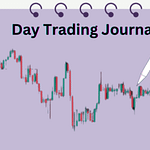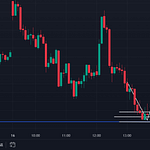A stock market is where people buy and sell shares of companies. Think of it like a giant market, but instead of fruits and vegetables, people are trading pieces of ownership in companies. These pieces of ownership are called “stock” or “shares”.
You own a small part of that company when you buy a share. A stock market is made up of stock exchanges, such as the New York Stock Exchange (NYSE) or NASDAQ, in India National Stock Exchange (NSE) and Bombay Stock Exchange (BSE), where these transactions take place.
Before starting trading in the stock market, it is important to understand the basics of trading in stock market. Imagine playing a game without knowing the rules or how to play – you won’t get very far! The same goes for the stock market.
Knowing the basics helps you make informed decisions and avoid common mistakes. It can be easy to get overwhelmed or lose money if you don’t know what you’re doing. By learning the basics, you set yourself up for success and can trade with confidence.
The purpose of this post is to give stock market beginners a simple and easy-to-understand guide to start their journey in stock market trading.
We’ll cover the basic concepts and steps you need to know to get started. Whether you want to make a little extra money or dream of becoming a full-time trader, this guide will help you take your first steps. Let’s dive in and learn the essentials together!
Table of Contents
ToggleWhat is the Stock Market?
A stock market is a place where people buy and sell shares of companies. Shares, also known as stocks, represent small pieces of ownership in a company. When you own a stock, you own a small part of that company.
How the Stock Market Works: Buying and Selling Shares
The stock market acts like a large marketplace where buyers and sellers come together. Here’s a simple breakdown of how it works:
- Buying Shares: If you want to buy shares, choose a company that you believe will perform well in the future. You can then buy a specific number of shares from the person who wants to sell them. For example, if you think a technology company is going to grow, you can buy 10 shares of that company.
- Selling Shares: If you own shares and you think the price is high enough for you to make a profit, or if you need money, you can sell your shares. You sell them to anyone who wants to buy them.
- Earning Money: You can earn money in two main ways:
Price Increase: If the company does well, its shares may increase in value. For example, if you buy a share for $10 and then its value is $15, you will make a $5 profit if you sell it.
Dividends: Some companies share a portion of their profits with shareholders. These payments are called dividends.
Brief Overview Of The Stock Exchange
A stock exchange is a place where stocks are bought and sold. It is like a big virtual market. Here are two well-known stock exchanges:
- New York Stock Exchange (NYSE): NYSE is the largest and oldest stock exchange in the world. Shares of many big companies like Coca-Cola and IBM are traded here.
- NASDAQ: NASDAQ is another major stock exchange. It is known for many technology companies like Apple, Google and Microsoft. Unlike the NYSE, NASDAQ transactions occur electronically through a network of computers.
These exchanges help make trading easy and fair by matching buyers with sellers and ensuring that transactions go smoothly.
The stock market is where you can buy and sell small pieces of companies, called shares. Stock exchanges such as NYSE and NASDAQ are places where these transactions take place. Understanding how the stock market works is the first step to becoming a successful trader.
Why People Buy Stocks?
Profit potential: Capital gains and dividends
1. Capital Gains
What is Capital Gain?: Capital gain occurs when you buy shares at a lower price and sell them at a higher price. Your profit is the difference between what you paid and what you sold it for.
Example: If you buy a share for $10 and then sell it for $15, you make a $5 profit. This $5 is your capital gain.
2. Dividend
What is a Dividend?: Dividends are payments that some companies make to their shareholders out of their profits. It’s like getting a bonus just for owning a stock.
Example: If a company decides to pay a dividend of $1 per share and you own 10 shares, you will receive $10.
Longterm Investing vs Shortterm Trading
1. Long Term Investment
What is it?: Long-term investing means buying stocks and holding them for several years or even decades.
Why do it?: People invest long-term because they believe the company will grow and the stock price will increase over time. This can lead to substantial profits if the company does well.
Example: Buying shares of a solid company like Apple and holding it for 10 years, the company will grow and the share price will increase significantly.
2. Short Term Trading
What is it?: Short-term trading is the buying and selling of stocks over short periods, from seconds to months.
Why do it?: People trade short-term to take advantage of small price changes. This requires more focus and quick decision-making.
Example: Buying shares of a company today and selling them next week when the price rises slightly.
Other Benefits: Ownership and voting rights in companies
1. Ownership in Companies
What does this mean?: When you buy a stock, you own a small part of that company. This ownership can give you a sense of pride and association with the company’s success.
Example: If you own shares of a company you love and believe in, you feel like you are part of their journey and growth.
2. Voting Rights
What are voting rights?: Some stocks give you the right to vote on important decisions such as electing the company’s board of directors or approving major changes.
Why is it important?: Voting rights allow you to have a say in how the company is run. This can be important for investors who want to influence a company’s direction.
Example: If you own shares in a company and it votes on a merger with another company, you can cast your vote to support or oppose the merger.
People trade shares mainly for the potential to earn money through capital gains and dividends. Some prefer long-term investments for gradual growth, while others opt for short-term trading to profit quickly from price changes.
Stock ownership provides benefits such as a sense of ownership in companies and the ability to vote on important decisions.
Key Terms to Know
Stock: What is Stock?
A stock is a form of investment that represents ownership in a company. When you buy a stock, you are buying a small piece of the company, called a share. Stocks are bought and sold in the stock market.
Difference between stock and share –
- Stock: Refers to the total ownership of the company.
- Share: A single unit of ownership in a company.
Example: If a company has 100 shares and you buy 1 share, you own 1% of the company. To say you own stock in a company means that you own one or more shares of that company.
Broker: Role of stock broker
A broker is a person or firm that helps you buy and sell stocks. Brokers act as intermediaries between you and the stock market. They execute your buy and sell orders and can provide advice and research.
Portfolio: Definition and Importance
A portfolio is a collection of all the investments you own, including stocks, bonds, and other assets. Having a diversified portfolio is important because it spreads your risk. If one investment doesn’t do well, others may do well, helping to balance your overall return.
Market Order: What it means
A market order is an instruction to buy or sell a stock at the current market price. This is the fastest way to trade, but the price you get may be slightly different from what you expect due to sudden price changes.
Limit Order: How It Works
A limit order is an instruction to buy or sell a stock at or above a certain price.
Buy Limit Order: You set the maximum price you want to pay. The order will be executed only if the stock price falls to that level.
SELL LIMIT ORDER: You set the minimum price you are willing to accept. The order will be executed only if the stock price rises to that level.
Example: If you set a buy limit order to $10, the stock will only be bought if it drops to $10 or less.
Bull Market: Explained
A bull market is when stock prices are rising or are expected to rise. This is a time of optimism and confidence among investors. People expect companies to do well, which drives up stock prices.
Bear Market: Explanation
A bear market is when stock prices are falling or are expected to fall. This is a period of pessimism and lack of confidence among investors. People expect companies to perform poorly, causing stock prices to fall.
Knowing these key terms helps you understand the basics of stock market trading. Stocks and shares represent ownership in companies, brokers help you trade, and a portfolio is your collection of investments. Market and limit orders are ways to buy and sell stocks, and bull and bear markets indicate the overall mood and direction of the market.
How Stock Prices are Determined
Supply and Demand
Like commodity prices in the market, stock prices are primarily determined by supply and demand. Here’s how it works:
Supply: This is the number of shares available for sale. If many people want to sell their shares, the supply is high.
Demand: This is the number of shares people want to buy. If many people want to buy shares, the demand is high.
Price Movement:
When demand exceeds supply (more people want to buy than sell), the price rises.
When supply exceeds demand (more people want to sell than buy), the price falls.
Factors Affecting Stock Prices
1. Company Performance
Earnings Reports: Companies regularly report their earnings (profit and loss). Good earnings can increase demand for a company’s stock, driving up the price. Poor earnings can reduce demand, driving down prices.
Growth Potential: If a company expects to earn more money through growth in the future, its share price may rise. This could be due to new products, expansion plans or successful business strategies.
2. News
Positive News: News about a company, such as a successful new product launch, can increase demand for its stock, driving up the price.
Negative News: News about issues such as legal issues or product recalls can reduce demand, and reduce prices.
General Market News: Economic news, political events, and global events can also affect share prices. For example, news of a strong economy can drive share prices higher, while news of a recession can drive them down.
3. Market Trends
Trends: These are patterns in stock prices over time. If many stocks are rising, it is called a bull market. If many stocks are falling, it is called a bear market.
Investor Sentiment: How investors feel about the market can drive trends. Optimism and confidence can cause prices to rise, while fear and pessimism can cause prices to fall.
Stock Market Index
Stock market indices are tools used to measure and track the performance of a group of stocks. Here are two well-known indexes:
1. S&P 500
What it is: The S&P 500 is an index that tracks the largest 500 companies listed on a stock exchange in the United States.
Importance: This is considered a good indicator of the overall health of the US stock market. When the S&P 500 is up, it usually means the market is doing well. When it’s down, the market doesn’t do as well.
2. Dow Jones Industrial Average (Dow Jones)
What it is: The Dow Jones is an index that tracks the 30 largest, publicly owned companies in the United States.
IMPORTANCE: This is one of the oldest and most followed indices. It provides a snapshot of overall market performance and investor confidence.
Stock prices are determined by the balance of supply and demand, influenced by factors such as company performance, news, and market trends. Stock market indices like the S&P 500 and the Dow Jones help track and understand overall market performance. Understanding these factors can help you make better decisions when trading stocks.
Types of Trading
Day Trading
Day trading involves the buying and selling of stocks on the same trading day. Day traders aim to profit from short-term price movements.
Features
Quick Trade: Day traders buy and sell stocks quickly, often holding them for minutes or hours but never overnight.
High Volume: They usually do many transactions in a single day.
Focus on small price changes: Day traders look for small price changes and try to take advantage of them.
REQUIRED ATTENTION: Day trading requires constant monitoring of stock prices and quick decision-making.
Tools and Analysis: Day traders often use charts, graphs, and trading software to analyze stock prices and trends.
Example:
A day trader buys shares of a company at 10:00 AM for $50 each and sells them at 2:00 PM for $52 each and makes a profit of $2 per share.
Swing Trading
Swing trading involves holding a stock for a few days to several weeks to take advantage of anticipated price changes.
Features
IntermediateTerm Trading: Swing traders hold stocks longer than day traders but not as much as long-term investors.
Focus on trends: They look for trends or patterns in stock prices and try to buy at the beginning of an uptrend and sell before it reverses.
Less Intensive Monitoring: Swing trading does not require constant attention like day trading, but it does require regular monitoring.
Using Technical Analysis: Swing traders often use technical analysis to identify trading opportunities.
Example
A swing trader buys shares of a company at $50 each and holds them for two weeks until the price reaches $60, then sells them at a profit of $10 per share.
Long term investment
Long-term investing involves buying stocks and holding them for years or even decades, with the expectation that their value will increase over time.
Features
Long-term horizon: Long-term investors hold their shares for years, focusing on the company’s overall growth.
Less frequent trading: They do not trade frequently; Instead, they make investment decisions based on the company’s long-term potential.
Focus on Fundamentals: Long-term investors look at a company’s financial health, management, industry position, and growth prospects.
Weather short-term fluctuations: They are not concerned with short-term price changes and are willing to bear market fluctuations.
Example
A long-term investor buys shares of a company for $50 each and holds them for 10 years. During this period, the company grows and the share price rises to $200 per share, resulting in significant profits.
Day trading involves quick, short-term transactions and requires constant attention, swing trading involves holding stocks for a few days to weeks and focusing on price trends, and long-term investing involves holding stocks for a year, focusing on overall growth. of the company. Each type of trading has its strategies and suits different types of investors.
How to start in share market trading?
1. Research and Education
IMPORTANCE OF EDUCATION BEFORE INVEST
Before you start investing in the stock market, it’s important to understand what you’re getting into. Learning the basics can help you make better decisions and avoid costly mistakes. Investing without knowledge is like driving without knowing the rules of the road.
Recommended Resources
Books: There are many great books on investing, such as “The Intelligent Investor” by Benjamin Graham and Burton G. “A Random Walk Down Wall Street” by Malkiel.
Websites: Websites like Investopedia (investopedia.com) offer comprehensive guides and tutorials on stock market basics.
Courses: Online platforms like Coursera (coursera.org) and Udemy (udemy.com) offer courses on investing and stock market trading.
2. Choosing a brokerage account
Factors to Consider
Fees: Find brokerages with low fees, such as commission-free trading or low-cost transactions. High fees can eat into your profits.
Ease of Use: The platform should be user-friendly, especially if you are a beginner. You should be able to navigate the website or app easily.
Customer Service: Good customer service is important if you have questions or problems. Find a broker with strong customer support.
Examples of Popular Brokerage Platforms
Robinhood: Known for its user-friendly app and commission-free trading.
ETrade: Offers many tools and resources for both novice and experienced traders.
Fidelity: Known for excellent customer service and wide investment options.
3. Setting Up Your Account
Steps to Open a Brokerage Account
- Choose a Broker: Choose a brokerage platform that suits your needs.
- Visit the Website or download the app: Visit the broker’s website or download their app.
- Fill out the application: You will need to provide personal information such as your name, address, social security number, and employment information.
- Choose your account type: Decide whether you want an individual account or a joint account if you’re investing with someone.
Verification Process
Identity Verification: The broker will verify your identity to ensure that you are a legitimate investor. This may include providing a copy of your ID and proof of address.
Approval: Once your identity is verified, your account will be approved and you will be ready to fund it.
4. Funding Your Account
HOW TO TRANSFER MONEY TO YOUR BROKERAGE ACCOUNT
Link Your Bank Account: Most brokers will ask you to link your bank account to your brokerage account. It allows you to transfer money electronically.
Transfer Funds: Once your accounts are linked, you can transfer funds from your bank to your brokerage account. This can usually be done by electronic funds transfer (EFT) or wire transfer.
Minimum Deposit Requirement
No Minimum: Some brokers, such as Robinhood, do not require a minimum deposit, making it easy for beginners to start with any amount.
Minimum Deposit: Other brokers may require a minimum deposit to open an account. For example, ETRADE may have a minimum deposit requirement, so check the specific broker’s terms.
Starting stock market trading involves educating yourself about investing, choosing the right brokerage account, setting up and verifying your account, and funding it with the necessary funds. Taking these steps carefully will help you start your trading journey off on the right foot.
Basic strategies for beginners
1. Buy and Hold
Explanation and Benefits
A buy-and-hold strategy involves buying shares and holding them for a long period regardless of short-term market fluctuations. The idea is to benefit from the overall growth of the market and the companies you invest in over time.
Advantages:
Simplicity: It is easy to understand and implement.
Less Stress: You don’t need to constantly monitor the market.
Boost Potential: Historically, the stock market tends to rise over long periods, so holding good stocks can lead to significant gains.
Example of how it works
Imagine you buy 10 shares of a company for $50 each, spending a total of $500. Over the next 10 years, the company grows and the share price rises to $150 per share. Your 10 shares are now worth $1,500. By holding the stock for the long term, you have made a $1,000 profit.
2. Diversification
IMPORTANCE OF DIFFERENTIAL INVESTMENT
Diversification means spreading your investments across different types of assets (stocks, bonds, etc.) and different sectors (technology, healthcare, etc.). This helps reduce risk because if one investment performs poorly, others may perform better, balancing your overall return.
How to Diversify Your Portfolio
Invest in different companies: Don’t put all your money in one company. Spread it across multiple companies.
Diversified Sectors: Invest in various industries such as technology, healthcare, finance, and consumer goods.
Different Asset Types: In addition to stocks, consider investing in bonds, mutual funds, or ETFs (exchange-traded funds).
Example:
Instead of just buying technology stocks, buy some technology stocks, some healthcare stocks, some financial stocks, and maybe some bonds. That way, if the tech sector doesn’t do well, your other investments can help protect your overall portfolio.
3. Dollar-Cost Averaging
Explanation of Policy
Dollar-cost averaging involves investing a fixed amount at regular intervals, regardless of the stock’s price. This means you buy more shares when prices are low and fewer shares when prices are high.
How does it help reduce risk?
Reduces the impact of volatility: By investing regularly, you avoid the risk of buying all your shares at high prices.
Promotes Discipline: It takes the emotion out of investing, helping you stick to your plan.
EASY TO IMPLEMENT: You can set up automatic investments to make regular contributions regardless of market timing.
Example:
Suppose you decide to invest $100 per month in a particular stock. In January, the stock price is $10, so you buy 10 shares. In February, the price drops to $5, so you buy 20 shares.
In March, the price rises to $20, so you buy 5 shares. In three months, you bought 35 shares at different prices, reducing the impact of price fluctuations.
Novice investors can benefit from strategies such as buy and hold, diversification, and dollar-cost averaging.
A buy-and-hold strategy involves long-term investing, spreads risk by investing in different assets and sectors, and helps manage market volatility by consistently investing in dollar cost averaging over time. These strategies can help you build a strong and balanced investment portfolio.
Understanding Risk
Explanation of market volatility
What is market volatility?
Market volatility refers to uncertainty or risk about the size of stock price changes. When the market is volatile, share prices can move up and down rapidly and unpredictably.
Why this happens:
Economic News: News about the economy, such as changes in interest rates or unemployment rates, can cause large increases in prices.
Company Performance: If a company reports earnings that are better or worse than expected, its share price can change quickly.
Global Events: Events such as political instability, natural disasters or epidemics can cause volatility in the market.
Effect:
Large Price Changes: You may see the value of your investment go up or down rapidly in a short period.
Emotional Stress: Large price changes can be stressful and lead to hasty decisions.
The only investment importance you can afford to miss
Why this is important:
Financial Security: Only invest money that you don’t need for your immediate expenses or financial obligations. This way, you won’t be in trouble if the value of your investment goes down.
Peace of Mind: Knowing that you can lose money invested helps reduce stress and anxiety about market fluctuations.
Example:
If you have $1,000 that you can comfortably invest without affecting your daily life or savings, you should consider investing. If the investment does not perform well, you will not be in financial trouble.
How to Manage and Mitigate Risk
1. Diversification
Spread Your Investments: Don’t put all your money into one type of investment or one company. Spread your investments across different stocks, sectors, and asset types (such as bonds and ETFs). This helps protect you if an investment underperforms.
2. Research and Education
Understand what you are investing in: Learn about the company or property before you invest. Understanding how it works and its potential risks can help you make informed decisions.
3. Set Investment Goals
Clear Goals: Define what you want to achieve from your investment and set realistic expectations. It can help you stay focused and make better decisions even when the market fluctuates.
4. Use a stop-loss order
Stoploss Orders: These are instructions you give to your broker to sell the stock if the price falls below a certain level. It helps limit your losses by automatically selling your stock if its price falls too low.
5. Review Your Investments Regularly
Monitor and Adjust: Check your investment portfolio regularly and make adjustments as needed. If a particular investment underperforms or your financial situation changes, it may be time to adjust your strategy.
6. Avoid Emotional Investment
Stick to your plan: Avoid making investment decisions based on emotions like fear or greed. Stick to your investment plan and strategy and avoid reacting impulsively to short-term market movements.
Example of Managing Risk:
If you invest $1,000 in a diversified portfolio of stocks and bonds, set stop-loss orders for your stocks to limit potential losses, and regularly review your investments, you can manage and reduce risk more effectively. If the market becomes very volatile, you’ll be better prepared to handle the ups and downs.
Understanding stock market risk involves recognizing market volatility, investing only as much as you can afford to lose, and strategies such as diversification, research, goal setting, using stop-loss orders, and avoiding emotional investment to manage and mitigate those risks. This approach helps protect your investment and ensures you are prepared for market fluctuations.
Tools and Resources
An overview of tools that can help
1. Stock Screener
What are they?: Stock screeners are tools that help you find stocks that meet specific criteria you set. They filter through thousands of stocks to show you only those that match your needs.
How they help: They can save you time by quickly identifying stocks based on factors like price, market capitalization, dividend yield, and more.
Example: If you are interested in buying stocks of companies with a dividend yield greater than 3% and a market cap greater than $10 billion, the stock screener can show you all stocks that meet these criteria.
2. Analysis Tools
What are they?: Analysis tools help you evaluate stocks and make informed investment decisions. They provide charts, graphs, and data on stock performance, financial metrics, and market trends.
How they help: They can show you trends and patterns in stock prices, helping you understand past performance and predict future movements.
Example: Technical analysis tools can help you see if a share price is moving up or down by showing charts with moving averages and other indicators.
The importance of staying updated with financial news
WHY THIS IS IMPORTANT
Market Impact: Financial news can affect share prices. For example, news about a company’s new product launch, financial reports, or changes in government policies can influence market trends and individual stock prices.
Informed Decisions: Staying updated helps you make informed investment decisions by understanding current events that may affect your investments.
HOW TO STAY UPDATED
News Websites: Visit financial news websites to get the latest updates.
News Apps: Use mobile apps to get real-time news alerts on your phone.
Social Media: Follow financial news accounts and market analysts on platforms like Twitter for instant updates.
Recommended Apps and Websites for Beginners
1. Apps
Robinhood: offers commission-free transactions and a user-friendly interface, making it easy for beginners to start investing.
Loyalty: Provides investment tools, educational resources, and excellent customer service.
Yahoo Finance: Offers real-time stock quotes, news updates, and portfolio tracking tools.
2. Websites
Investopedia (investopedia.com): Great for learning the basics of investing and understanding financial terms. It has a comprehensive academic department.
Morningstar (morningstar.com): Provides in-depth research and analysis on stocks, mutual funds and ETFs.
Seeking Alpha (seekingalpha.com): Offers articles and analysis from various market experts and analysts.
Example of using tools and resources
Let’s say you are interested in investing in technology stocks. You can use the stock screener to find tech stocks that meet your investment criteria. Then, you use analysis tools to evaluate the performance and potential of this stock.
You stay updated with financial news to understand the latest developments in technology and use apps like Robinhood or Fidelity to manage your investments and track your portfolio.
Tools like stock screeners and analysis tools help you find and evaluate stocks while staying updated with financial news and keep you informed about market influences.
Apps and websites designed for beginners provide an accessible platform for learning, tracking, and managing your investments. Using these resources effectively can make your investment journey smoother and more informed.
Common mistakes to avoid
Emotional Trading: Avoiding decisions based on fear or greed
What is Emotional Trading?
Emotional trading occurs when you make investment decisions based on your emotions instead of logic and research. It often involves acting out of fear or greed.
Why this is a problem:
FEAR: If you panic when the market falls, you may sell your stocks at a lower price, losing out on potential future gains.
Greed: If you are too eager to make a quick profit, you may invest in risky stocks without proper research, leading to potential losses.
How to avoid it:
Stick to your plan: Have a clear investment plan and stick to it regardless of market ups and downs.
Set Limits: Decide in advance when you will buy or sell stocks based on your investment goals, not market sentiment.
Take a Break: If you feel overwhelmed, take a break from trading to avoid making impulsive decisions.
Overtrading: Why less can be more
What is overtrading?
Overtrading involves buying and selling stocks repeatedly. This can lead to high transaction fees and unnecessary stress.
Why this is a problem:
High Fees: Frequent trading fees and commissions can add up and eat into your profits.
Stress and Confusion: Constant buying and selling can be stressful and lead to poor decision-making.
How to avoid it:
Have a strategy: Develop a clear investment strategy and follow it. Avoid dealing just for the sake of trading.
Focus on Quality: Instead of trading frequently, focus on choosing high-quality investments and holding them for the long term.
Review Regularly: Review your investments regularly but avoid making changes based on short-term market movements.
Not doing enough research: The importance of informed decisions
What doesn’t do enough research?
This means making investment decisions without thoroughly researching the stocks or assets you are buying. This can lead to poor investment choices and losses.
Why this is a problem:
Lack of Understanding: Without research, you cannot understand the risks and potential of your investment.
Bad Decisions: Investing without knowing the performance of stocks or the health of the company can lead to unexpected losses.
How to avoid it:
Research Companies: Look into a company’s financial health, performance history, and prospects before investing.
Use reliable sources: Use reliable sources for your research, such as financial news websites, stock analysis tools, and expert opinions.
Continuously Learn: Keep learning about investing and the stock market to make informed decisions.
Example to avoid mistakes:
Instead of panic selling your stocks when the market drops (emotional trading), stick to your investment plan and avoid unnecessary trading (overtrading).
Before buying a new stock, thoroughly research the company’s financials and the industry. This approach helps you make well-formed and rational investment decisions.
Avoiding emotional trading means sticking to your plan and not letting fear or greed influence your decisions. Overtrading can be avoided by focusing on quality investments and not trading too frequently.
Thorough research helps you understand what you’re investing in, which leads to better and more informed decisions.
You may also like to read: Beginners 21 Day Options Trading Rules To Become a Profitable Trader
Conclusion
Understanding the basics of stock market trading, using effective strategies, managing risk, and avoiding common mistakes will put you on a solid path as an investor. Start small, keep learning, and be patient and disciplined to achieve long-term success in the stock market. Happy Trading!






